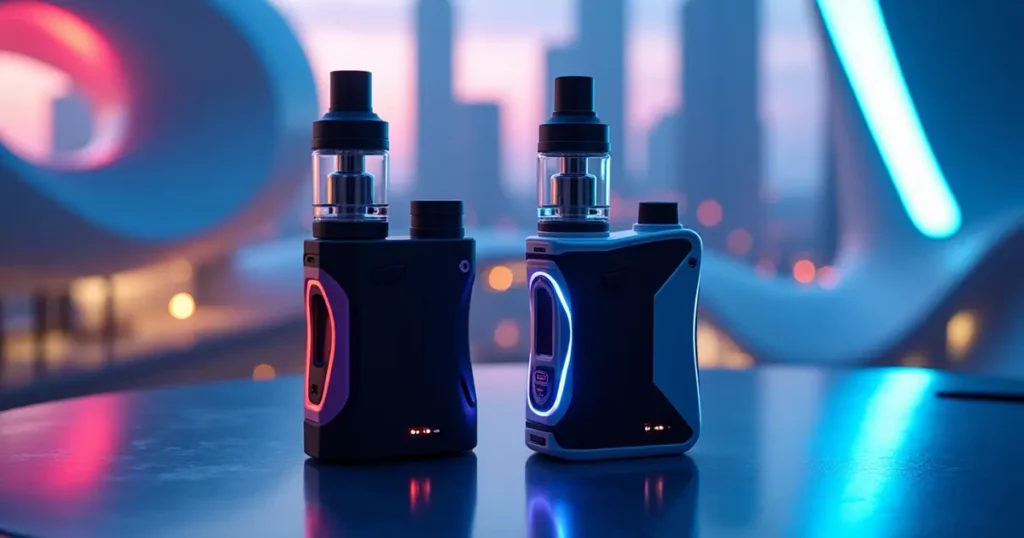How to Choose a Safe, High-Quality Vape Cartridge for Your Needs

Vaping has become a popular way for people to enjoy plant-based extracts, botanical blends, and aromatic oils in a clean, portable format. Yet with the growing variety of vape cartridges on the market, it can feel confusing to know which ones are actually safe, lab-tested, and right for you.
This guide breaks down what cartridges are, how they work, and the key factors that matter most when buying one—whether your goal is flavor, relaxation, or wellness support. You’ll also learn how licensed dispensaries such as Get Bud Online typically maintain safety and quality standards, so you can make confident, informed choices.
Understanding Vape Cartridges
A weed vape cartridge—often shortened to cart—is a small, sealed container that holds a concentrated liquid or oil. It connects to a rechargeable battery (commonly through a universal 510-thread). When heated, the oil inside turns into vapor and is inhaled through the mouthpiece.
Each cartridge has three essential parts:
- The mouthpiece, where vapor is drawn in.
- The chamber, which holds the oil or extract.
- The heating element or coil, powered by the attached battery.
High-quality cartridges are designed to deliver consistent vapor without leaking or burning. They also use safe materials—such as stainless steel or ceramic components—rather than inexpensive metals that could contaminate the vapor.
Why People Prefer Cartridges
The appeal of vaping comes down to simplicity and control. Many users appreciate that cartridges are ready to use, discreet, and easy to store. You don’t need special tools or preparation; you simply attach, activate, and inhale.
Other benefits include:
- Portability – small enough to carry anywhere.
- Reduced odor – vapor dissipates quickly compared with smoke.
- Dose consistency – each draw produces a similar amount of vapor.
- Variety – cartridges come in multiple flavor and formulation options, from botanical blends to CBD-rich wellness formulas.
Still, convenience should never replace caution. Buying blindly from unverified sellers is one of the leading causes of unsafe or contaminated cartridges. That’s why understanding what makes a product trustworthy is essential.
Key Factors to Consider Before Buying
1. Product Origin and Licensing
Always start by asking where the cartridge was made and who is responsible for it. Licensed producers are required to follow state and federal safety rules, maintain sanitary production conditions, and submit their products for laboratory testing.
Legal dispensaries such as Get Bud Online typically work only with verified manufacturers. They require third-party certificates of analysis (COAs) to prove that each batch meets purity and potency standards.
Avoid unbranded carts or those sold through informal channels. If the packaging lacks manufacturer contact information, serial numbers, or lab-testing details, it’s best to skip it.
2. Ingredients and Formulation
Read the ingredient label carefully. A quality cartridge should contain only the active extract and possibly naturally derived terpenes for flavor. There should be no added vitamin E acetate, heavy oils, or thinning agents that could irritate the lungs.
If you prefer botanical blends or hemp-based extracts, look for CO2-extracted or solvent-free formulations, which are cleaner and preserve natural aromas.
3. Hardware Materials
Not all cartridges are built the same. Poorly made hardware can release unwanted metals or micro-particles when heated. Look for:
- Food-grade stainless steel or ceramic coils
- Tempered glass or high-quality polymer tanks
- Secure seals to prevent leaks
Cheap plastics or off-brand metals are warning signs of inferior construction.
4. Laboratory Testing and Certificates of Analysis
A COA is the gold standard of product transparency. It confirms the product has been tested by an independent lab for potency and contaminants such as pesticides, residual solvents, and heavy metals.
A reliable COA should include:
- Batch number matching the product label
- Date of testing and lab name
- Results for contaminants (should read “ND” for not detected)
- Potency percentages of key ingredients
If a seller can’t provide this documentation, consider it a red flag.
5. Reputation and Reviews
Check independent reviews on consumer forums and verified retailers. Look for consistent comments about taste, vapor quality, and reliability. A few negative reviews are normal, but repeated issues like leaking, burnt taste, or questionable lab results suggest poor quality control.
Established dispensaries and marketplaces are usually transparent about their supplier partnerships and testing protocols, helping consumers separate reputable brands from risky imitators.
For example, Get Bud Online holds an “Excellent” 4.9/5 TrustScore from over 1,600 reviews, with most customers praising product quality, fast delivery, and responsive service—showing the kind of transparency and reliability consumers should look for when choosing reputable cannabis retailers.
Recognizing Counterfeit or Unsafe Products
Counterfeit cartridges often imitate popular brands, copying logos and packaging while filling the hardware with unknown oil. Some signs of a fake or unsafe product include:
- Misspelled words or blurry graphics on the box
- No batch number or QR code
- Inconsistent oil color or cloudiness
- Excessively low price compared with standard retail rates
Scanning a QR code (when available) should link you to an official test report hosted on the manufacturer’s website—not a random PDF uploaded to a file-sharing site.
Understanding Potency and Personal Tolerance
If the product contains active plant compounds or cannabinoids, potency levels will vary. Beginners should look for milder formulations and use short, controlled puffs until they understand their tolerance.
Even with nicotine-free or botanical blends, starting slow helps you gauge your comfort level with vapor temperature and inhalation depth. A good rule of thumb: low voltage, low risk. Overheating a cartridge can damage delicate ingredients and produce harsh vapor.
Legal and Responsible Use
Before purchasing any vape cartridge, confirm that it’s legal in your jurisdiction. Regulations differ by state and country—not only for cannabis derivatives but also for nicotine and herbal blends.
Licensed dispensaries such as Get Bud Online operate only in regions that permit adult use or medical distribution. They typically verify age and compliance requirements before any transaction.
Responsible use also includes:
- Storing cartridges upright in a cool, dark place
- Keeping devices away from children and pets
- Avoiding use while driving or in prohibited public areas
- Following manufacturer instructions for charging and maintenance
Being informed protects both you and those around you.
The Role of Lab Testing in Consumer Safety
Independent laboratory testing is one of the most important safeguards in the vaping industry. It ensures that the final product is free from contaminants and accurately labeled.
Labs typically analyze for:
- Pesticides and residual solvents – traces from the cultivation or extraction process
- Heavy metals – possible leaching from low-quality hardware
- Microbial contamination – bacteria, mold, or yeast
- Potency accuracy – confirming the stated ingredient levels
A transparent company publishes or provides these reports upon request. When in doubt, choose products with verifiable testing rather than trusting marketing claims.
Storage, Maintenance, and Longevity Tips
Taking care of your cartridge extends its lifespan and keeps vapor quality consistent.
- Store upright: prevents oil leakage and keeps the mouthpiece clear.
- Keep away from heat: high temperatures can thin oils and cause leaks.
- Clean connection points: use a cotton swab and isopropyl alcohol to remove residue.
- Avoid over-tightening: screw connections firmly but gently to prevent damage.
- Use proper voltage settings: too high a temperature can burn the oil and degrade flavor.
With regular maintenance, a single cartridge can remain fresh for months when stored correctly.
Travel and Portability Considerations
If you plan to travel, research local rules about carrying weed vape devices or oils. Many airlines restrict cartridges in checked luggage, allowing them only in carry-on bags. Some destinations prohibit certain ingredients altogether.
Keep your device turned off when not in use, and always transport it in a protective case to prevent leaks or accidental activation.
Why Trusted Dispensaries Matter
Licensed dispensaries exist to provide a regulated, transparent marketplace. They follow strict guidelines to protect consumers and maintain trust in the industry.
For example, a model like Get Bud Online—a U.S.-based, licensed dispensary structure—demonstrates how reputable retailers verify age, maintain secure transactions, and source only from certified producers. They prioritize testing, labeling accuracy, and compliance rather than volume sales.
When you buy from legitimate, regulated sources, you gain access to customer support, return policies, and educational staff who can explain product differences and safety details. That level of accountability simply doesn’t exist in the gray or illicit market.
Frequently Asked Questions
- How long does a cartridge last?
Most 1-gram cartridges provide several hundred draws, depending on temperature settings and puff duration. Moderate users often find that a cartridge lasts one to two weeks. - Can cartridges expire?
Yes. Over time, exposure to light, heat, and air can degrade oils, altering color and taste. Check the packaging for a manufacturing or expiration date, and discard any product that smells or looks off. - What’s the safest temperature to vape at?
Lower voltage settings (around 2.5–3.3 volts for many batteries) preserve flavor and reduce the risk of burning the oil. High heat can cause degradation or unpleasant aftertaste. - Are refillable cartridges worth it?
Refillable hardware can reduce waste, but cleanliness is crucial. Residue buildup or contamination may affect flavor or safety. Only refill with compatible oils recommended by the hardware manufacturer. - How can I tell if my cartridge has gone bad?
Signs include thickened oil, dark coloration, clogging, or a burnt taste. Discontinue use if any of these occur, and properly recycle or dispose of the cartridge.
Looking Ahead: The Future of Safe Vaping
Consumer awareness has pushed the vaping industry toward greater transparency and regulation. Expect to see more QR-code traceability, eco-friendly packaging, and third-party certification seals that make it easier to verify authenticity.
As research advances, better heating technologies and cleaner extraction methods will continue improving safety and flavor. Meanwhile, education remains the best protection—knowing how to evaluate products and recognize trustworthy retailers.
Final Thoughts
Choosing the right vape cartridge doesn’t need to be overwhelming. When you focus on safety, transparency, and verified sourcing, you naturally avoid most of the risks associated with low-quality or counterfeit products.
Always buy from licensed and reputable online cannabis dispensaries such as the model exemplified by Get Bud Online—organizations that put consumer well-being before profit. Look for lab testing, clear labeling, and honest communication about ingredients and origins.
By taking these simple precautions, you can enjoy a cleaner, more reliable vaping experience—one grounded in awareness, responsibility, and confidence.
References:
THC Cartridges. LivWell. (2024, December 23). THC Cartridges: What Are They & How Do They Work?. Available at: https://livwell.com/blog/thc-cartridges
Get Bud Online. Trust Pilot Reviews. (2025). Available at: https://www.trustpilot.com/review/getbudonline.com
Wikipedia. (2025, June 24). Legality of cannabis by U.S. jurisdiction. Available at: https://en.wikipedia.org/wiki/Legality_of_cannabis_by_U.S._jurisdiction







